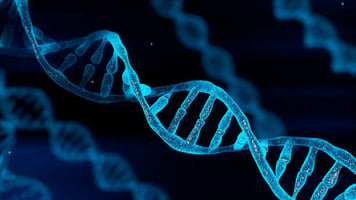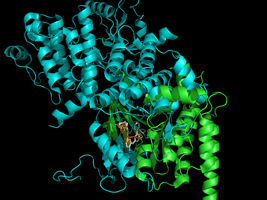Diagnostics Reimagined
Patented Versatile Platform for Biosensing: Tunable for detection of infections and diseases
What can we test for?

Viruses
Covid-19, HIV1, HIV2, Hepatitis B, Hepatitis C, HTLV, West Nile Virus, Syphilis, Emerging Pandemics
Am I sick or not sick?
With three simple steps, our biosensor technology is revolutionizing diagnostics
1. Place Sample on Chip
2. Insert Chip Into Reader
3. View Test Result
-Nov-13-2023-02-26-02-6665-AM.png)
Our Groundbreaking Publications
Dementia biomarkers detected by DNA aptamer-attached portable graphene biosensor
Dementia biomarkers detected by DNA aptamer-attached portable graphene biosensor
Significance -
Our memories define us and connect us to others. Without them, we are lost. This is the driving force behind the global push to treat neurodegenerative diseases of the older population. How does one know they have a disease that has few outward symptoms until later stages? The current testing methods for diseases such as Alzheimer’s and Parkinson’s require a spinal tap and imaging tests such as MRI. This has made early detection of these diseases an incredible challenge. This work highlights a DNA aptamer-modified graphene field-effect transistor biosensor to detect unprocessed biomarker proteins in easily accessible biofluids derived from patients with Alzheimer’s disease, in pursuit of an affordable early-onset detection of neurodegenerative diseases.
Viruses of SARS-CoV-2 and its variants in saliva
Rapid self-test of unprocessed viruses of SARS-CoV-2 and its variants in saliva by portable wireless graphene biosensor
Significance -
Highly specific SNP detection
Highly specific SNP detection using 2D graphene electronics and DNA strand displacement
Significance -
Our electrical sensor-based SNP detection technology, without labeling and without apparent cross-hybridization artifacts, allows fast, sensitive, and portable SNP detection with single-nucleotide resolution. The technology has a wide range of applications in digital and implantable biosensors and high-throughput DNA genotyping, with transformative implications for personalized medicine.
Patents
WO2025054610: Detection of dementia biomarkers using aptamer-modified graphene field-effect transistors
Detection of dementia biomarkers using aptamer-modified graphene field-effect transistors
Abstract -
Dementia is a brain disease which results in irreversible and progressive loss of cognition and motor activity. Despite global efforts, there are no simple and reliable diagnosis or treatment options. Embodiments of the disclosed technology provide an aptamer-based graphene field-effect transistor (GFET) biosensor platform that has high sensitivity and precision across a range of epidemiologically significant Alzheimer's disease and Parkinson's disease variants, and enables at-home and point-of-care (POC) testing for neurodegenerative diseases. An example method of detecting for detecting a molecular biomarker for dementia of a subject includes receiving a biological sample comprising the molecular biomarker for dementia, contacting the biological sample with a biosensor device comprising a GFET-based detection chip, and detecting a presence of the molecular biomarker for dementia in the biological sample.
WO2025024598: Biomarker detection using graphene field effect transistor sensor arrays and multichannel data acquisition
WO2025024598A1: Biomarker detection using graphene field effect transistor sensor arrays and multichannel data acquisition
Abstract -
We have developed a CMOS based low-power, multichannel data acquisition IC which interfaces directly with an array of GFET sensors for high-throughput, multiplexed evaluation of clinically-relevant biomarkers in a physiological sample. An example device for detecting a target analyte in a biological sample is provided. The device comprises an integrated circuit (IC) operable for evaluation of the biological samples for the target analyte, a two-dimensional array of graphene field effect transistor (GFET) sensor units where each of the GFET sensor units comprises a graphene surface with one or more probes attached to the graphene surface, and a control circuitry configured to simultaneously control a voltage clamping or a current clamping of each of the GFET sensor units. The biological sample is in contact with the one or more probes and the graphene surface, and the one or more probes bind to the target analyte present in the biological sample.
US11946931: Methods and devices for detecting a pathogen and its molecular components
Methods and devices for detecting a pathogen and its molecular components
Abstract -
US10793898: Nano-sensors for nucleic acid detection and discrimination
Nano-sensors for nucleic acid detection and discrimination
Abstract -
Methods, systems, and nano-sensor devices are disclosed for detecting or discriminating nucleic acids with a single nucleotide resolution based on nucleic acid strand displacement. The detection can be made by time-lapse fluorescence measurements or by electro-based graphene FET, which can be combined with wireless communication to provide real-time transmission of the detected signals.
Contact Us






